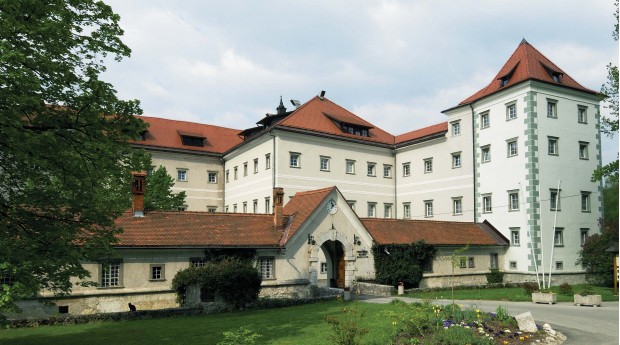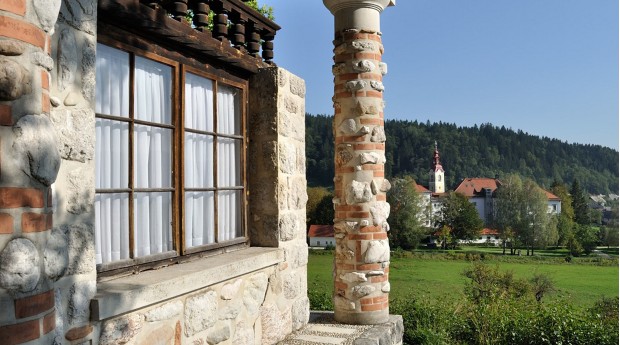- KEYBOARD NAVIGATION
- DISABLE ANIMATIONS
- HIGH CONTRAST
- BLACK & WHITE CONTRAST
- INCREASE TEXT SIZE
- DECREASE TEXT SIZE
- MARK TITLES
- MARK LINKS
- UNDERLINE LINKS
Katzenstein Mansion
Stroll beneath the treetops of the horse chestnut tree-lined avenue surrounding the park. It leads to Plečnik's masterpieces and the burial ground of hostages in the park.
The magnificent Katzenstein mansion has been declared a cultural monument of national significance. Visit the surrounding park, with works by Jože Plečnik and Boris Kalin, and the Museum of Hostages.
PARK WITH WORKS BY JOŽE PLEČNIK
From the mansion a horse chestnut tree-lined avenue leads to a gazebo, named Brezjanka and a pavilion with a shrine to St. Joseph, known as Jožamurka. The designs for both were drawn up during the years 1937-1939 by the famous Slovenian architect Jože Plečnik, commissioned by the Sisters of Charity of St. Vincent de Paul.
In the park there is a burial ground of world war II hostages and combatants. The bronze statues of a hostage and a prisoner, as well as the karst marble sculpture of a female hostage, are the work of Boris Kalin. There is also a bell, formerly from the parish church, in the park, which was cast in 1923, and a memorial to the victims of fascist violence.
The mansion, prison, park with burial ground, and Plecnik's Jožamurka and Brezjanka have been declared cultural monuments of national significance. It is not possible to visit the interior of the mansion.
A LOOK INTO THE PAST
The Katzenstein Mansion in the centre of Begunje na Gorenjskem, originally known as Begunje Manor, was buit in the 14th century. Its present day appearance dates from renovations in the 16th, 17th and 18th centuries. The mansion experienced a severe catastrophe in 1439 when it was severley damanged by Jan Vitovec. In the time of Protestantism there was a Protestant chapel in the former tower, where Jurij Dalmatin preached. He was later executed by the counter-reform commission.
The mansion was named after the Kacijanar family, who was its owner from the second half of the 14th century up until 1764. At that time it passed into ownership of the famous Counts of Lambergh who merged it with the estate of Kamen Castle. Later it was owned by the Ljubljana feudal lord Jerman, who in 1875 sold it to the Austro-Hungary judicial administration who turned it into a women's prison. It was run by the Sisters of Charity of St. Vincent de Paul.
During the time of German occupation, political prisoners were incarcerated in the mansion. Since 1953 the Begunje Psychiatric Hospital has occupied the majority of the mansion. On the ground floor in the northwest part of the building there were prisons during the occupation, which in 1961 was converted into the Museum of Hostages.
Related news
A dark story of the second world war. The former prisoners cells in the Gestapo prison have been turned into a memorial museum
Discover the attractions of Begunje na Gorenjskem with a local guide.
The Village Trail invites you to take a walk through the birth place of Slavko Avsenik, where memories of the past are still alive.
This short but rather steep ascent rewards the hiker with unforgettable views of Radovljica area, Bled and Mt Triglav.





